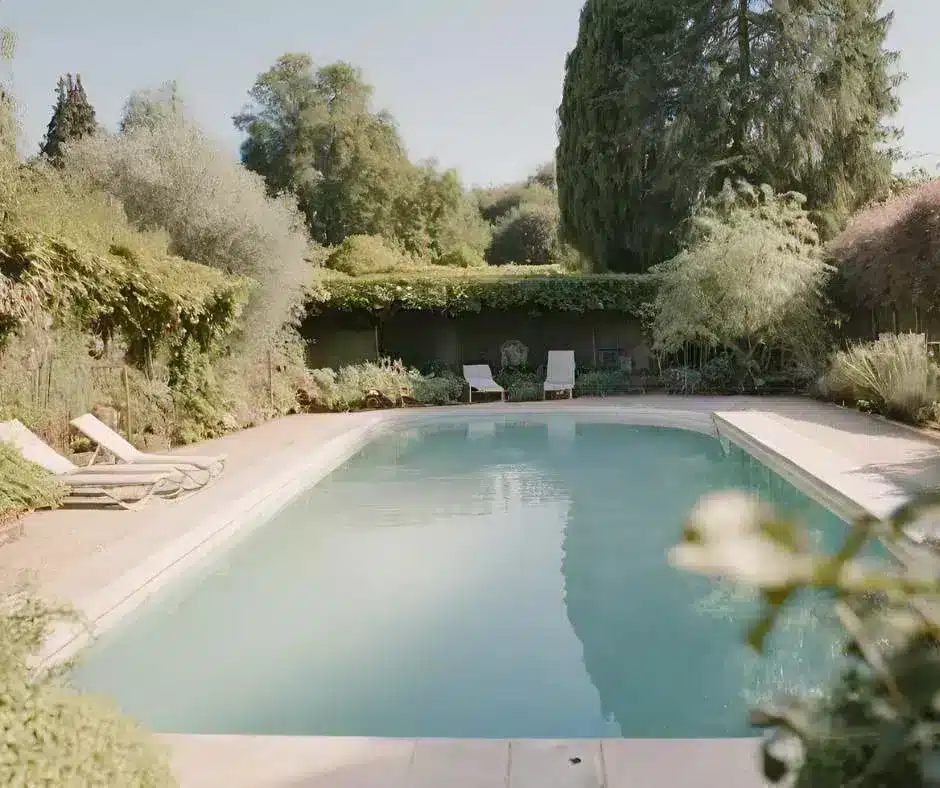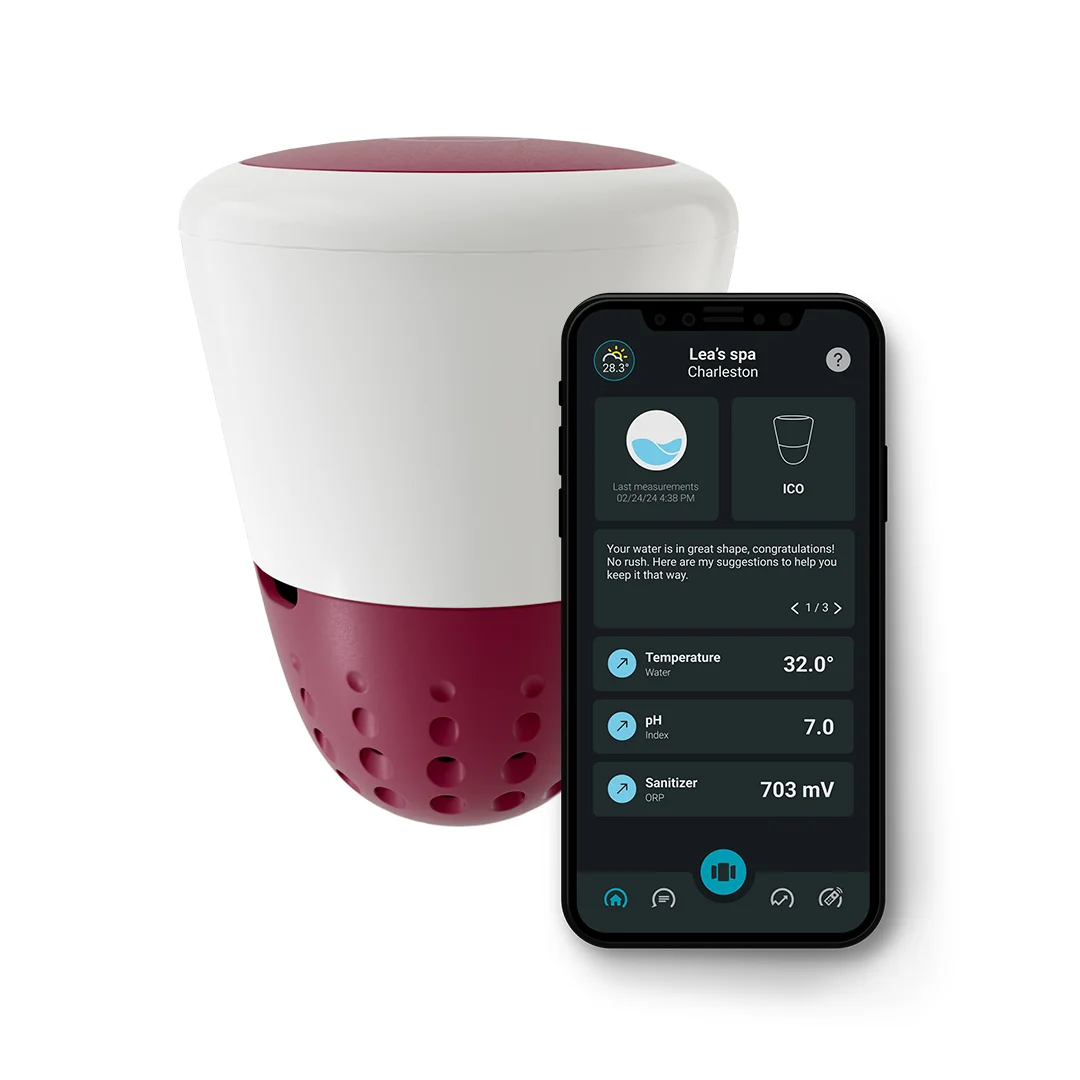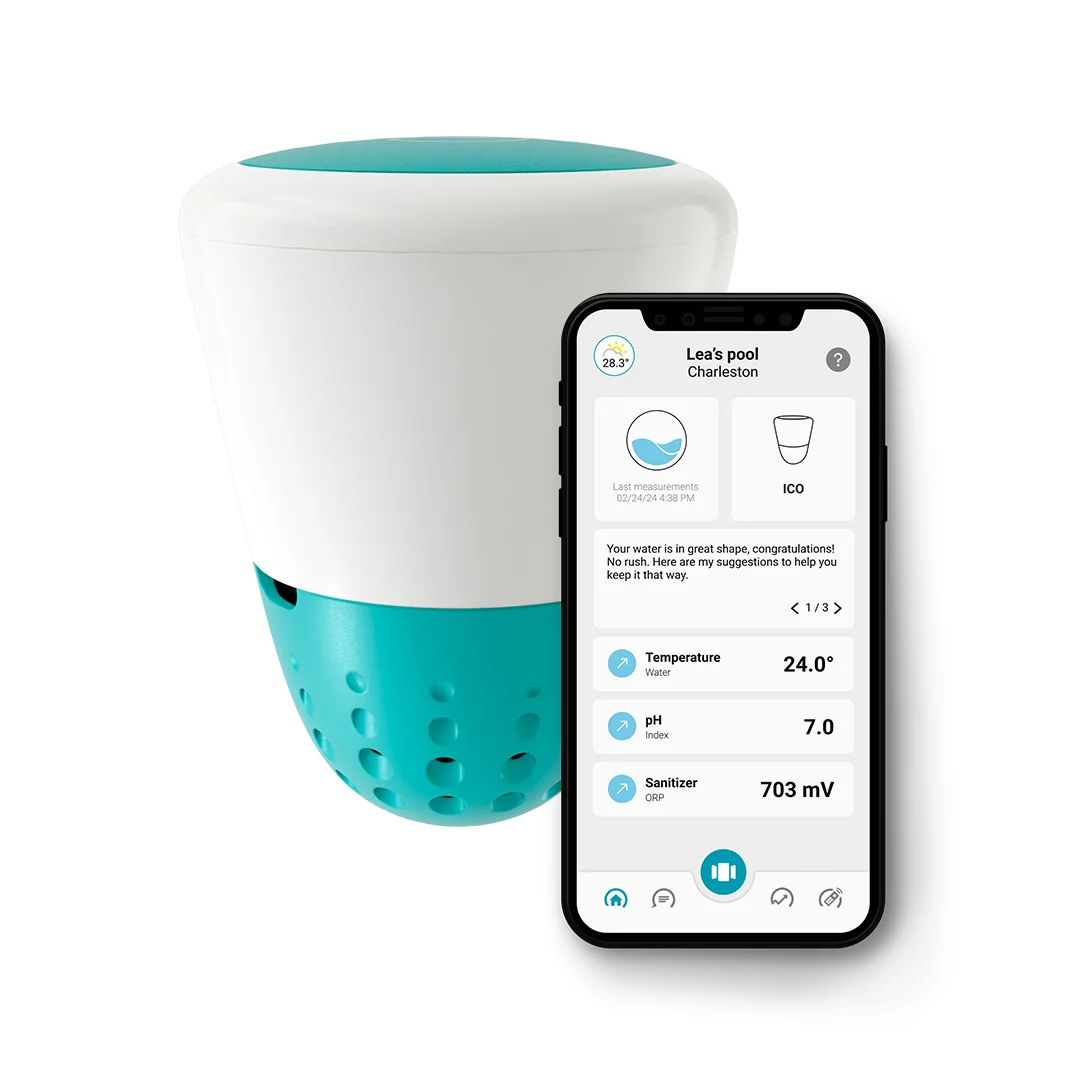Free delivery, French manufacturing, Satisfied customers
Free delivery, French manufacturing, Satisfied customers
Cloudy or milky water occurs when it is difficult to see the bottom of the pool. There are many reasons for this: pH variations, algae suspended in the water, excessively hard water or poor filtration... If your water is cloudy, you need to identify the problem so you can remedy it effectively. Here's our advice.

If the water in your pool or spa is cloudy and slightly milky, you need to measure several water parameters to identify the cause. Once this has been done, all you need to do is apply the right chemical treatment to restore clear, balanced water.
The pH is undoubtedly the first factor responsible for water imbalance, which causes water cloudiness. The pH should be between 7,0 and 7.6 for chlorine-treated water, or between 7.2 and 7.6 for bromine or salt-treated water. A basic pH, i.e. above 7.8, can give the water a milky appearance.
pH should be measured at least once a week. Here's how to regulate the pH in your pool or how to raise or lower pH in a spa.
Water with too much calcium causes the water to change and become cloudy. Check the TH (water hardness): water is perfect between 10°f and 20°f (100 to 200 mg/l or ppm).
La scale in the water may be temporary (caused by an imbalance in the water) or linked to the quality of the water in your region. If this is the case, you'll need to adapt your pool's overall maintenance by using appropriate products. All about TH.
To treat hard water, use an anti-scale product in accordance with the manufacturer's dosage.
If your pool water is too hard, milky water may be due to poor water filtration. Activez spa water filtration or pool water filtration. Remember this rule: filtration time should be equal to half the water temperature. For example, 14 hours of filtration for water at 28°C.
Don't forget to check the condition of the filter (and clean it regularly), as well as the filter pressure. If the filter pressure is too high, the filter is probably clogged.
Following a chlorine shock treatment, dead white algae can float to the surface, giving the water a milky appearance. You need to act quickly to sanitize your pool. Then remove as much algae as possible with your landing net. If you use a clarifier or flocculant (see the paragraph at the bottom of the page, Difference between clarifier and flocculant, to find out which product is compatible with your filter and how to use these products) before activating water filtration.
To take care of your pool or spa and prevent the water from changing too much, you should always go back to the two basics:
As we explained in this article, if your pool water is cloudy, it's out of balance. As always, the answer depends on how badly the water has deteriorated. If you can't see the bottom of your pool, don't use it, as the risks to your health are considerable. If the water is a little cloudy, it may cause skin or eye irritation. It's not recommended for young children or pregnant women. A shower after swimming is mandatory. In a spa environment, the temperature of the water rapidly increases the factor of bacterial growth, so bathing is strongly advised against until the problem has been resolved. Translated with DeepL.com (free version)
Pool or spa flocculant is used as a complement to water treatment (pH correction, presence of dead white algae). It can also be used to treat cloudy water, improving filter efficiency, disinfection and water clarity. Be careful, however, to use a flocculant product compatible with the type of filter you're using. If you have a diatomaceous earth filter, flocculant cannot be used; you need to use a clarifying product that is recommended for this type of filter.
These two solutions help the filtration system to catch up with cloudy water. Pool or spa flocculant has an agglomerating effect that brings together micro-particles to facilitate their elimination by the filter. This product is not only more labor-intensive, but also less water-efficient. You'll need to use a robot vacuum cleaner to recover the deposits that have fallen to the bottom of your pool, then level the water again. Clarifiers remove particles via the filtration system, without the need for vacuuming. Slower-acting than flocculant, clarifier does not clog impurities and suspended deposits. This product is recommended for diatomaceous earth or sand filters. It is often used after shock treatment.
To restore crystal-clear water, check and correct pH parameters, filtration quality and water hardness. Use your robot vacuum cleaner and brushes to remove any particles (dead white algae) and activate your pool's filtration system. There are measuring solutions available, such as ICO, to simplify the maintenance of your pool or spa. They enable you to monitor water analysis with their built-in probes, recommend chemical treatments at the right dosage and, last but not least, offer advice to support you on a daily basis.

